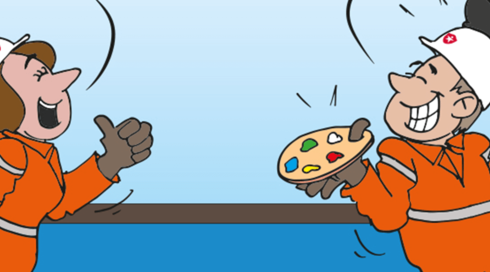6
This month, we look at smarter ways to stay protected at work – here's how you can prevent common hand injuries like fractures, tendinitis, and dislocations.
A smashed fingernail while hammering, a cut from a utility knife, or a crush injury from a getting stuck in a pinch point – these are some ways you can accidentally injure yourself at work.
Hand and finger injuries are common in the offshore industry. 29.47% of total industry lost-time incidents by body part involved fingers (20.26%) or hands/wrists (9.21%) according to a 2018 Summary of Occupational Incidents published in June 2019 by the International Association of Drilling Contractors (IADC) and this is just the reported data, often injuries also go unaccounted.
Serious hand injuries can not only keep you from being productive at work but, in more severe cases, can also impact your overall quality of life. Fortunately, these injuries are easily preventable if one is a PLAYER.
PPE: Wearing proper hand protection for the job
Protective gloves will not only keep hazardous chemicals off your skin but will also protect you from punctures and cuts from sharp materials. Ensure that you have the right fit and material assessed according to the job.
LOTO: Ensure Lock Out Tag Out (LOTO) is applied (when needed) before working on machinery and equipment
Always double-check the LOTO tags – this will ensure that people working in potentially hazardous areas are kept safe and machines are not turned on while maintenance work is ongoing.
AWARENESS: Ensure everyone stays focused
YOU: Personal responsibility for the safety of yourself and others
ERGONOMICS: Always be aware of hand and body placement
RIGHT TOOL: Tools make the job easier
At Atlas, we believe you matter, and so do your skilled hands. #ZeroHarm
.png)
.png)


